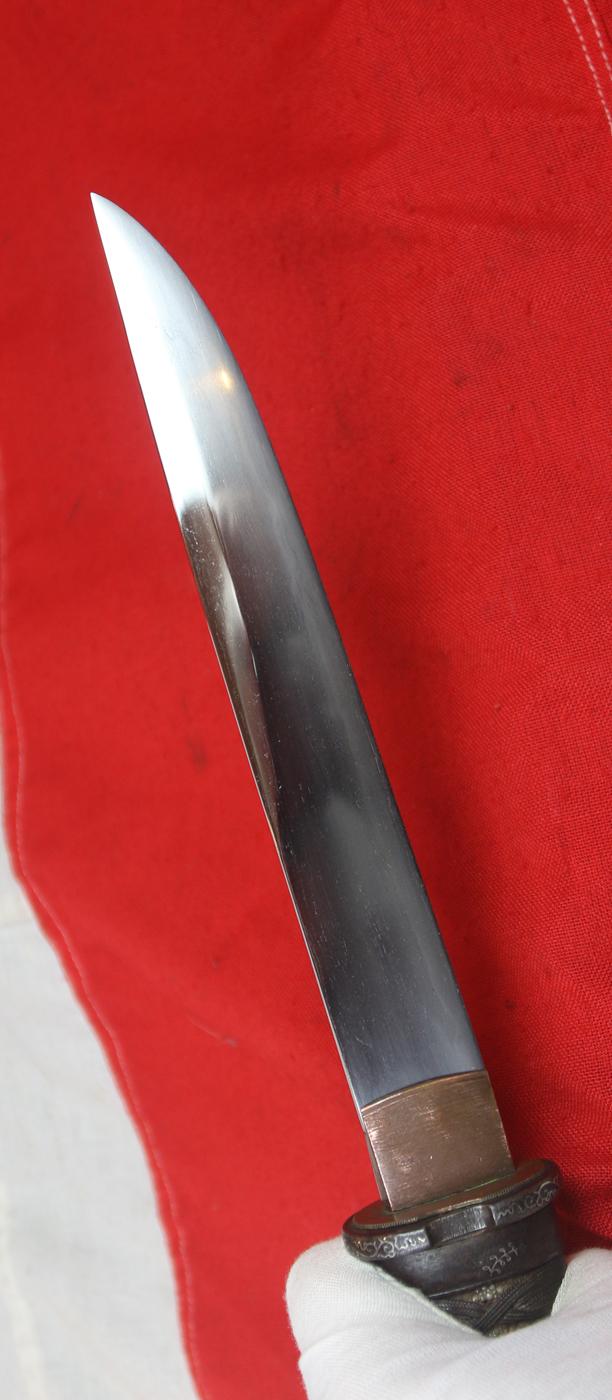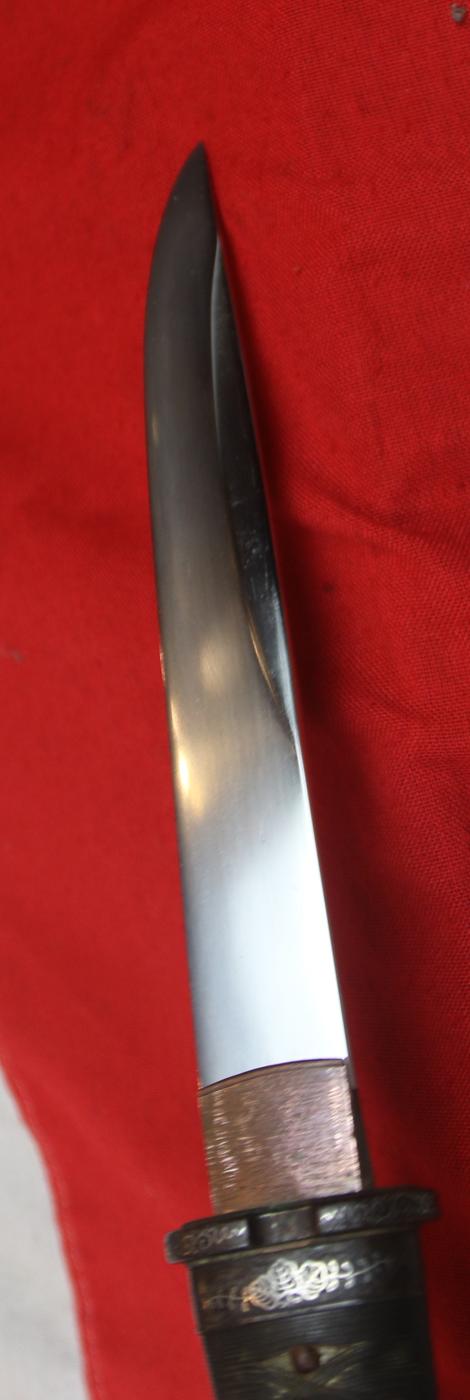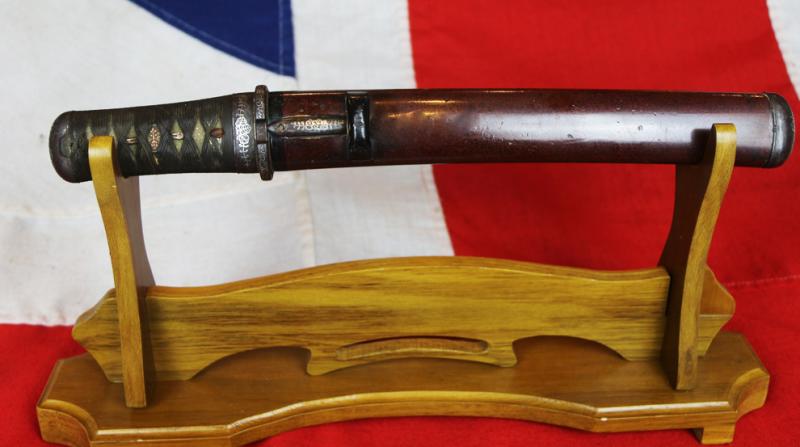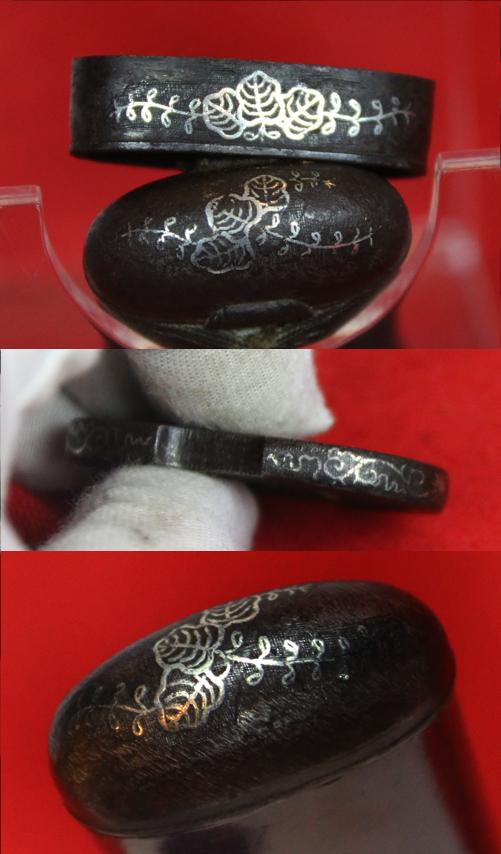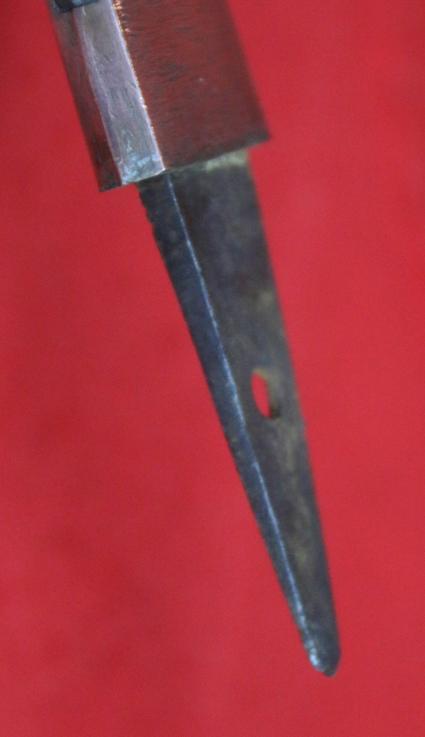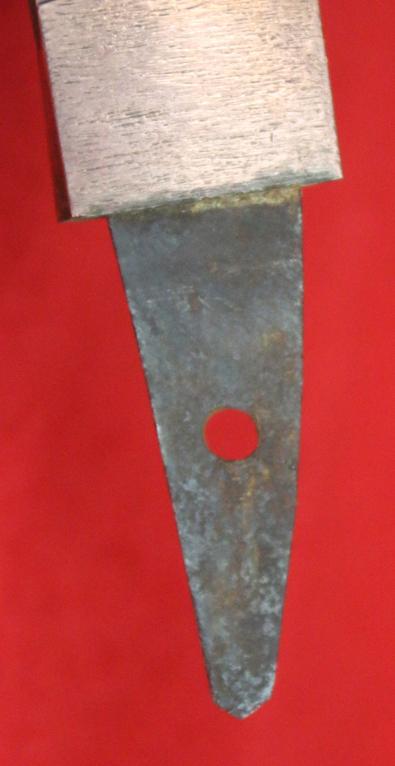A Super Shinshinto Edo Period Rare Hira with Unokubi Form Blade Tanto With Silver Inlaid With Kiri Mon Higo School Iron Mounts All En Suite With Kozuka and Kogai
Original Edo period iron, Higo school fully matching silver inlaid Kiri Mon mounts and matching tsuba of iron inlaid with silver leaves and tendrils. The kiri mon is known as probably the highest rank mon to be used in the samurai era of Japan, and only the highest grade of samurai could bear it. It has a cinnabar red lacquer saya with matching Higo sayajiri. Matching kogai in iron and silver kiri mon inlay, and it has a kozuka utility knife, inlaid with gold butterflies.
Black tsukaito binding over kiri mon menuki. Very beautiful rare hira-unokubi form blade with two flat sides and back edge scoop like shape, and with a very fine and elaborate hamon, best seen in varied light.
The five leaf pawlonia kiri mon, is of the Paulownia, it is a deciduous tree that is widely cultivated in Japan. It belongs to the figwort family Paulowniaceae and it is also known as the “princess tree “ “emperor tree”. This tree was adopted as a crest motif because it symbolizes good fortune.
Paulownia had been deified as a tree which a hoo (mythological sacred bird in Chinese lore, phoenix) perched on. One theory held in Japan that it had been used for embroidery and shaped resist dyeing on Emperors' clothes, and thought to be a family crest with the highest social status after 'Kikuka-monsho' since the time of Emperor Saga. Also after the Middle Ages, it was the family crest that samurai families desired, and Takauji ASHIKAGA and Hideyoshi TOYOTOMI, and so on, received it from the Emperors. Therefore the awareness that Goshichinokiri was 'the family crest for people who hold the reins of government' became established
Tanto are generally forged in hira-zukuri style (without ridgeline), meaning that their sides have no ridge line and are nearly flat, unlike the shinogi-zukuri structure of a katana. Some tanto have particularly thick cross-sections for armour-piercing duty, and are called yoroi toshi. Tanto first began to appear in the Heian period, however these blades lacked artistic qualities and were purely weapons. In the Early Kamakura period high quality tanto with artistic qualities began to appear, and the famous Yoshimitsu (the greatest tanto maker in Japanese history) began his forging. Tanto production increased greatly around the Muromachi period and then dropped off in the Shinto period. Shinto period tanto are quite rare. Tanto were mostly carried by Samurai; commoners did not generally carry them. Women sometimes carried a small tanto called a kaiken in their obi for self defence.It was sometimes worn as the shoto in place of a wakizashi in a daisho, especially on the battlefield. Before the 16th century it was common for a Samurai to carry a tachi and a tanto as opposed to a katana and a wakizashi.
Code: 24031


